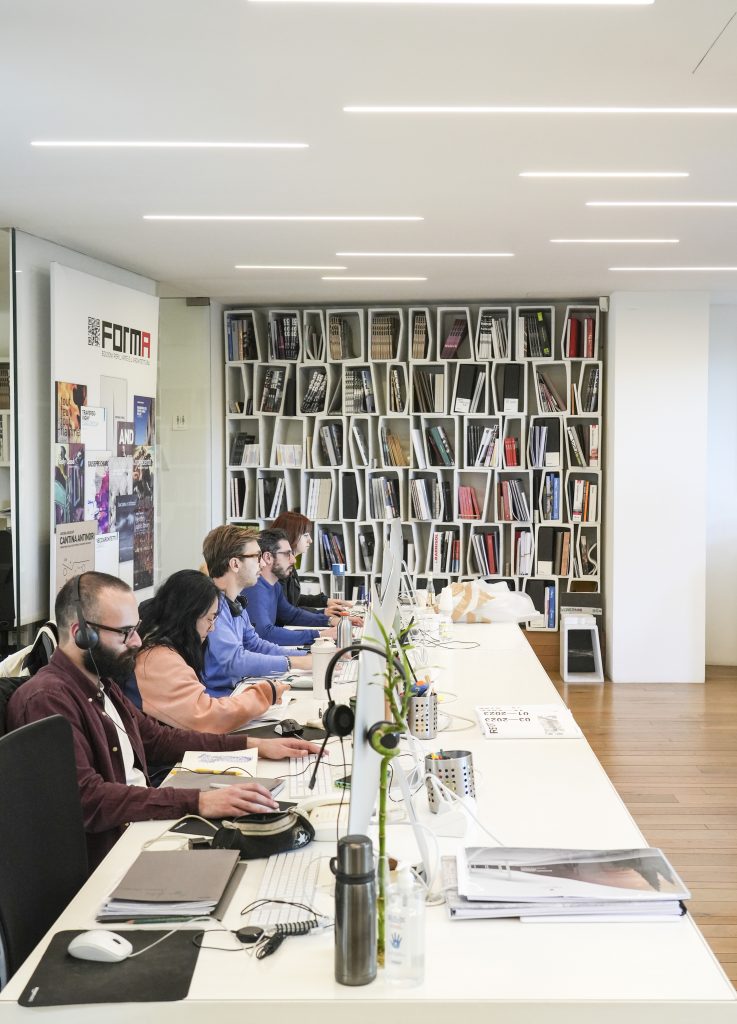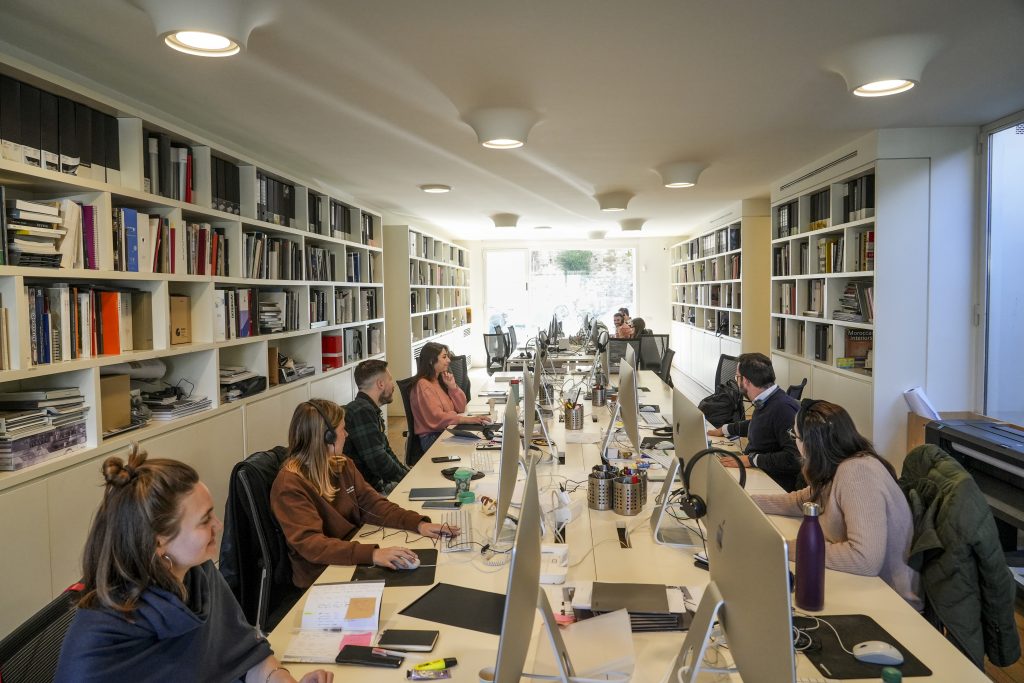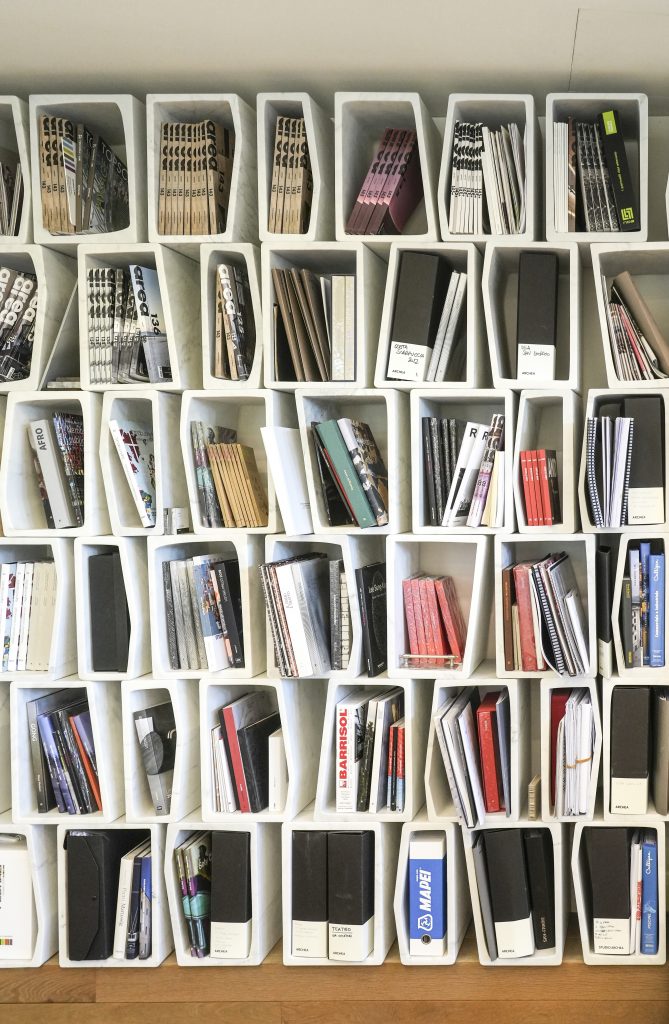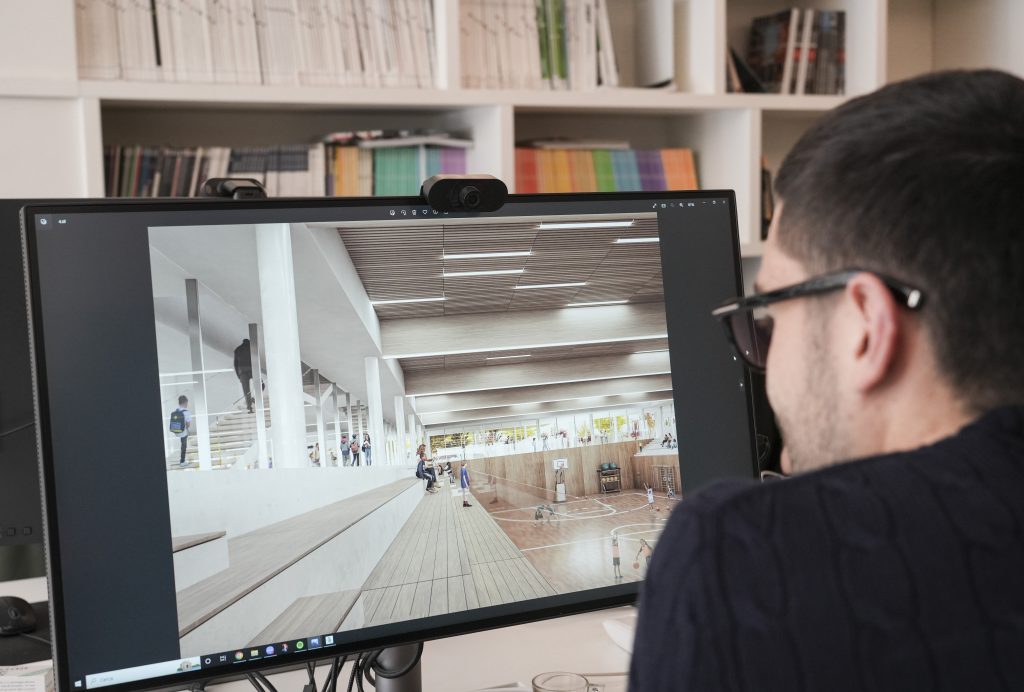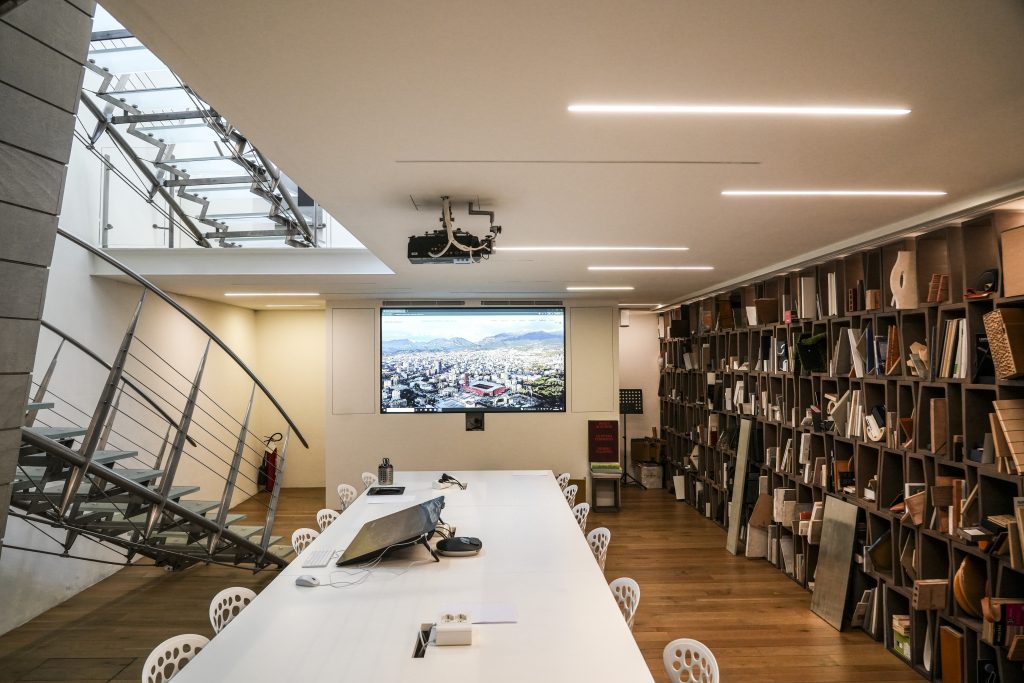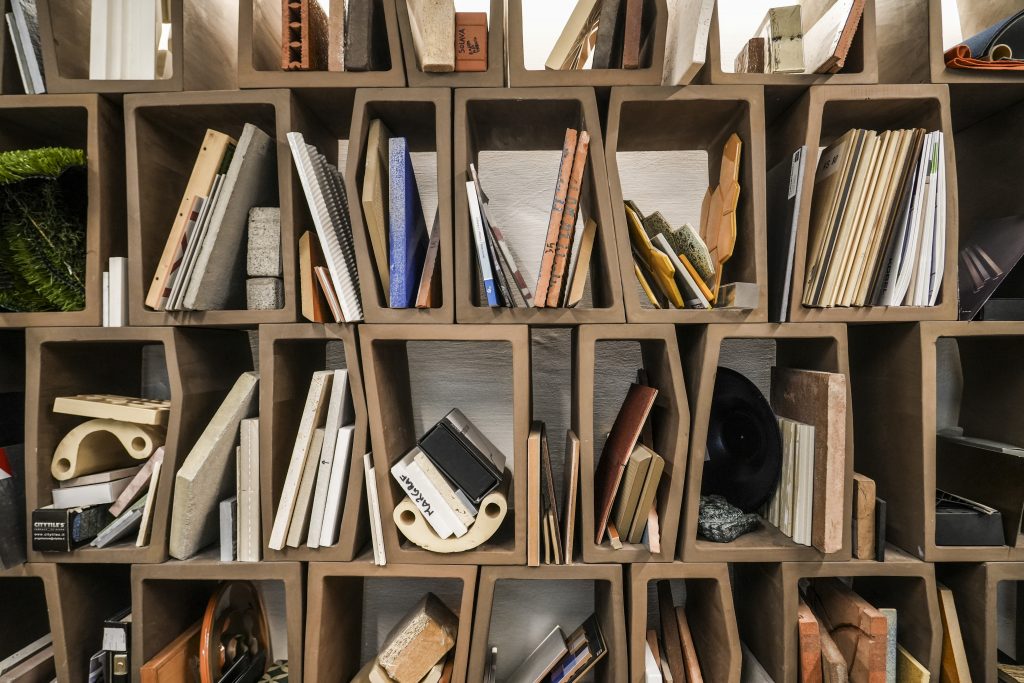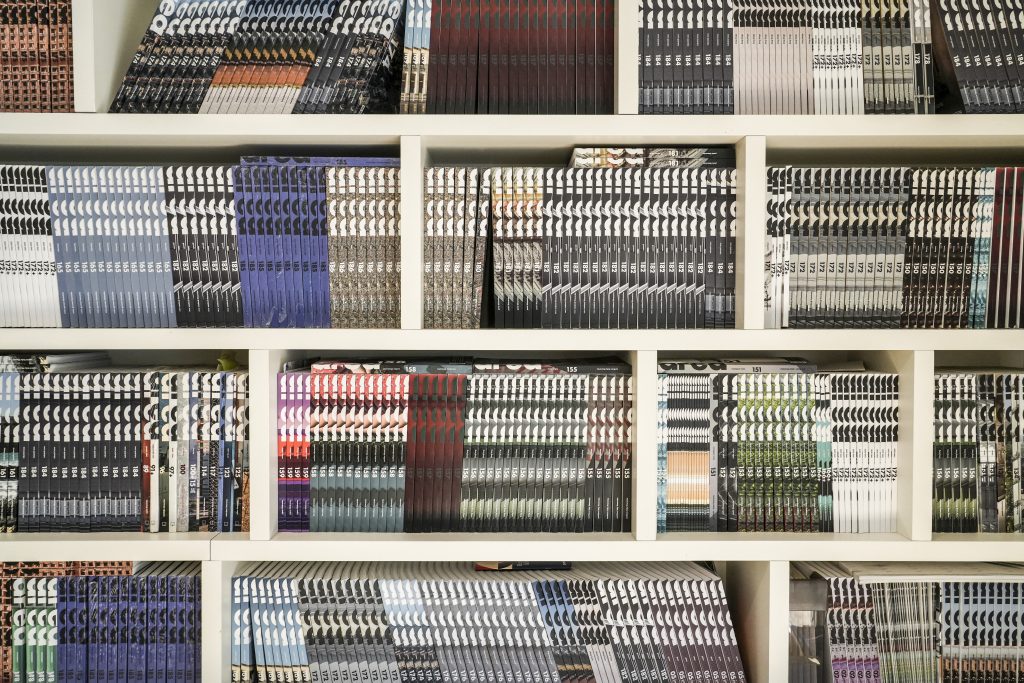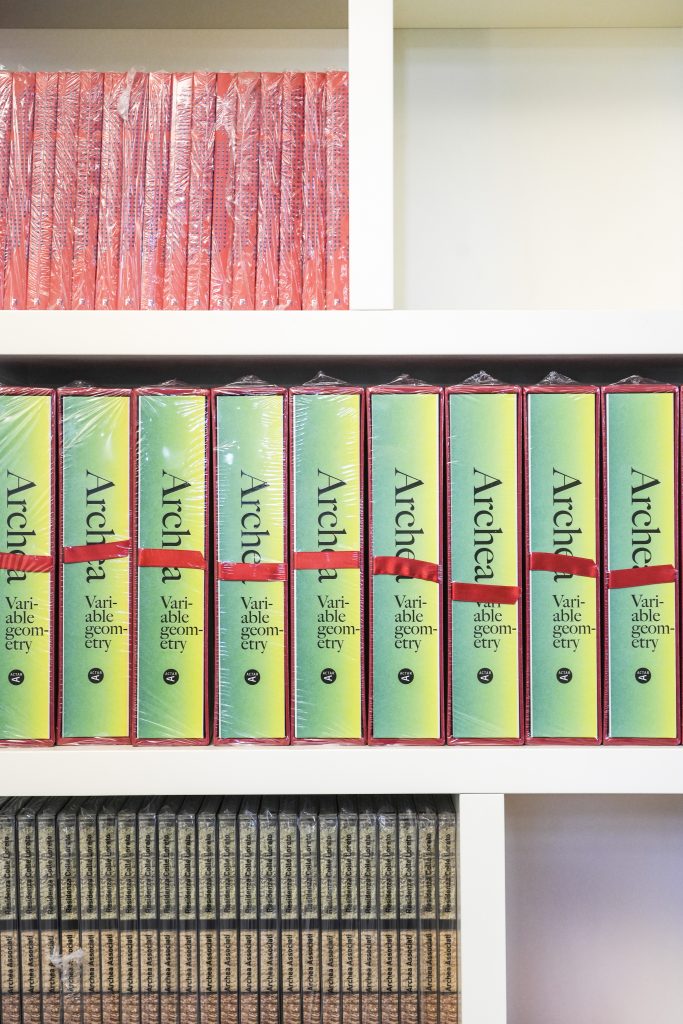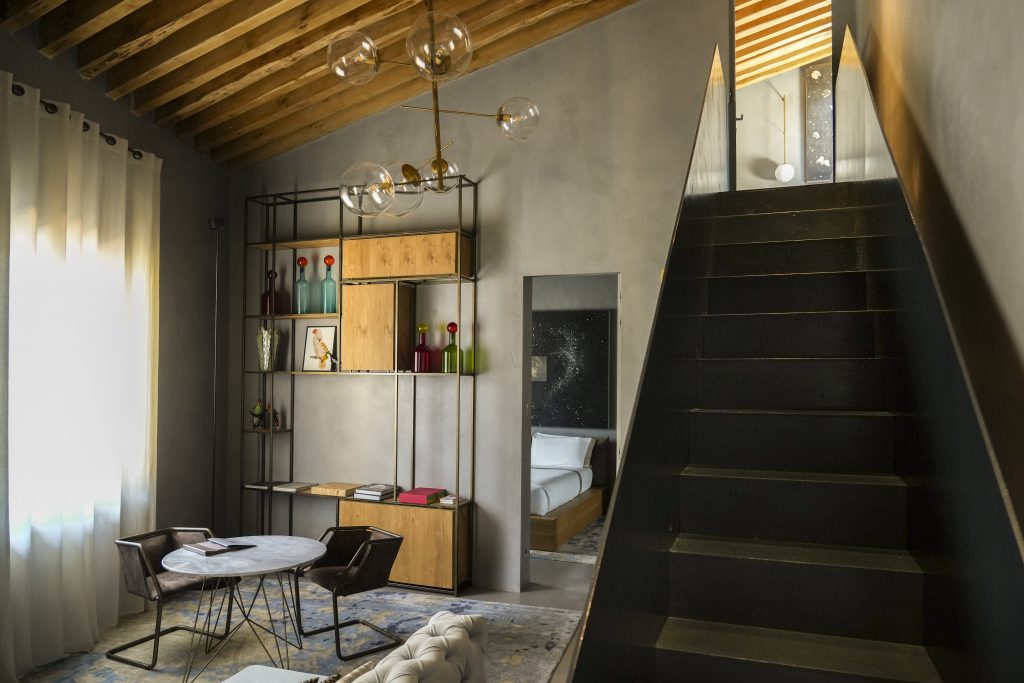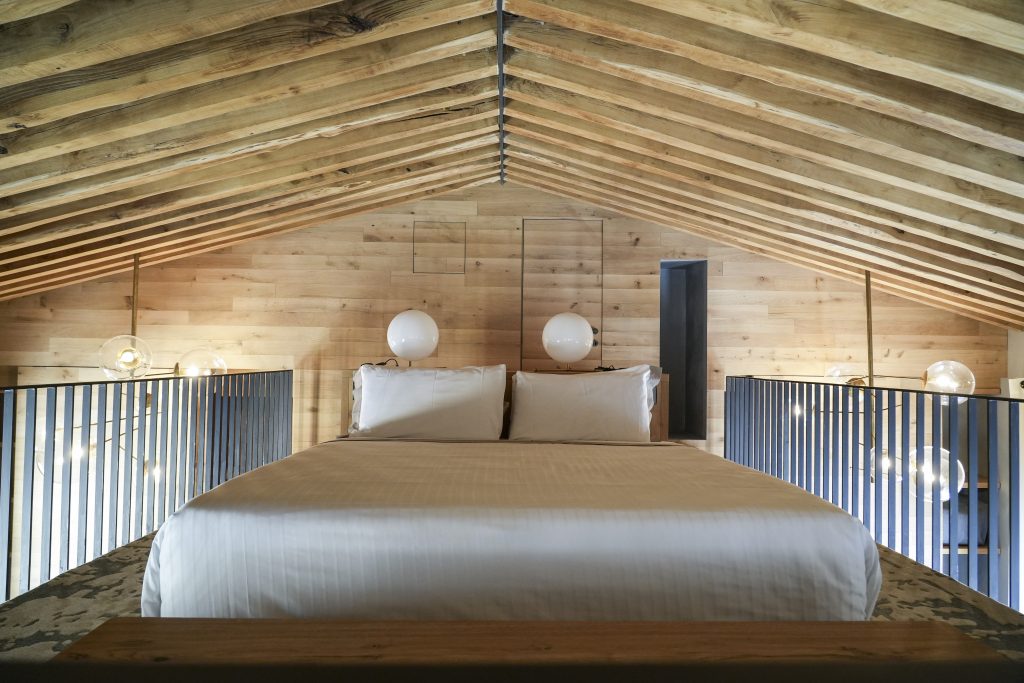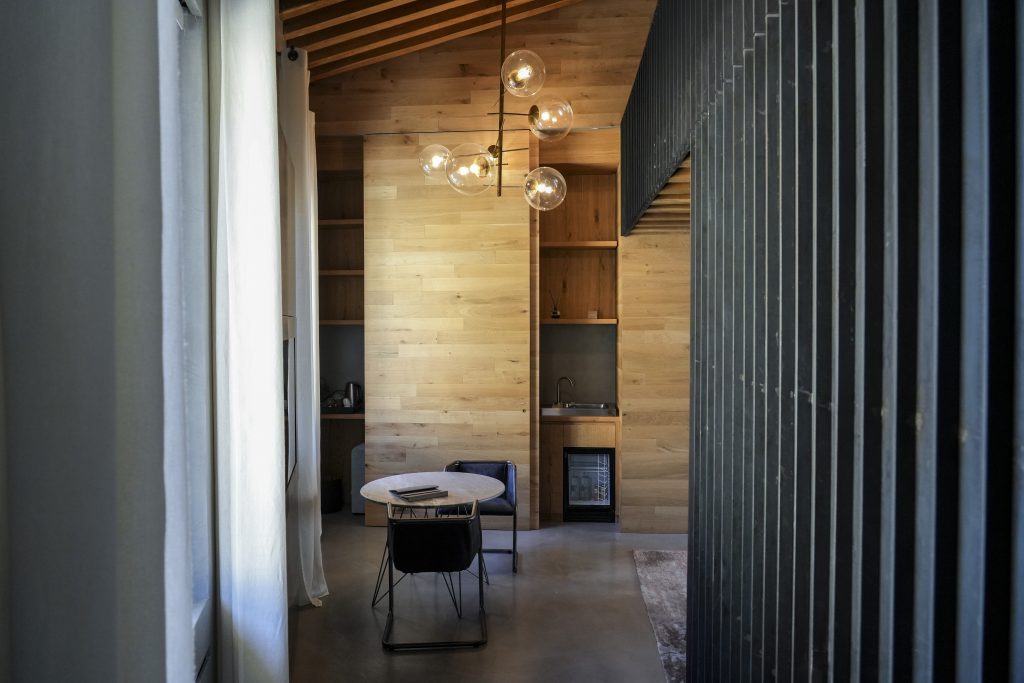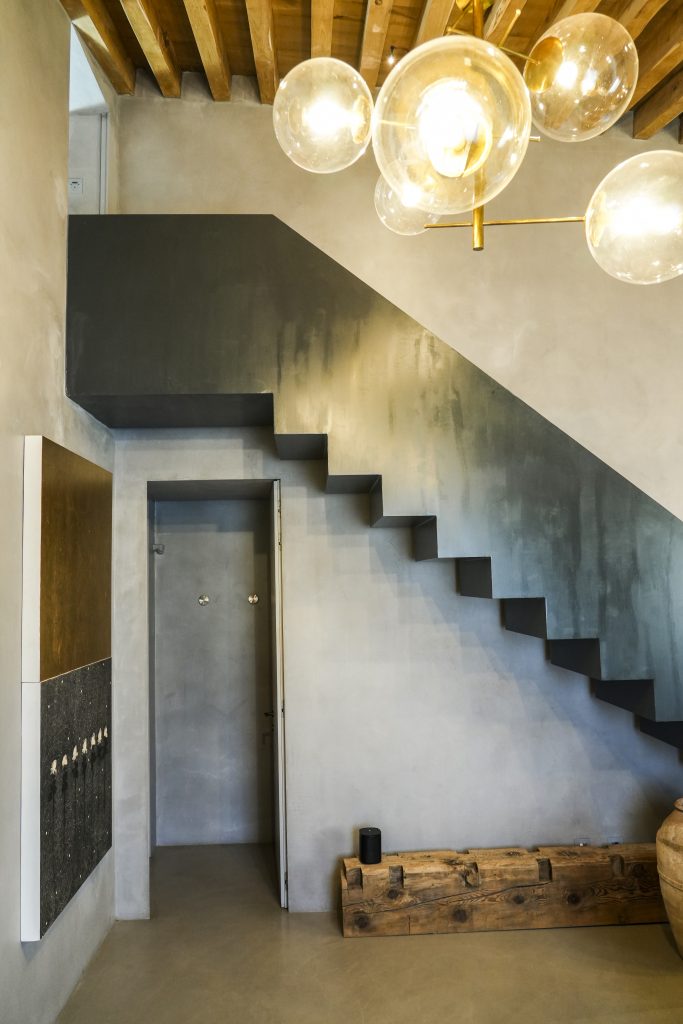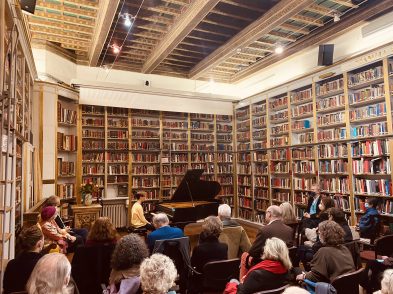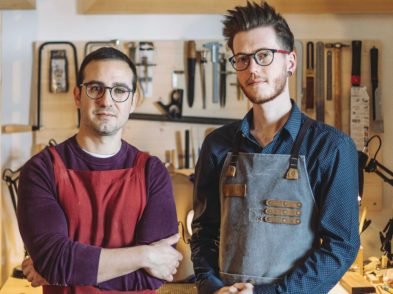On lungarno Benvenuto Cellini stands an ancient building with a simple door. A plaque with the word “Archea” sits to the side. One might walk by it a hundred times and not even notice, but a glorious wonderland awaits if one is lucky enough to encounter someone with the password to what lies beyond the door.
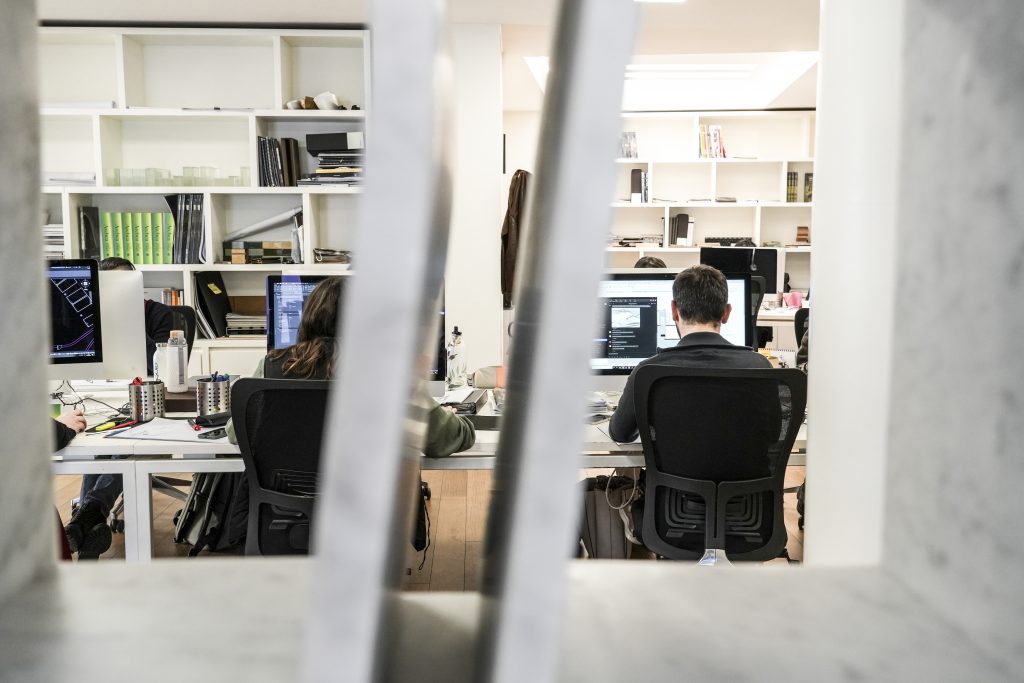
The entrance is white but aesthetically pleasing, suspended above an area that piques the mind’s eye. We know there is something around the bend, down a staircase, but we don’t know what exactly. There is a sense of anticipation. From the first instant there is not only architecture, but there is drama. As we make our way down the floating modern staircase, almost like an industrial bridge to the future, yet light as a feather, elements of glass, metal, stone and more combine to give a sense that we are entering a mystical world of creation, the inner workings of a creative clock. There is what seems to be a city-block length bookcase, betraying absolute order in creative disorder. But there is nothing disorderly about any of it. We have entered into a porthole through the future in an ancient house. We are in the world of Archea, the Italian-created design studio responsible for hundreds of forward-thinking architectural masterpieces around the globe. Founded in 1988 by a trio of architecture students at the time, Marco Casamonti, Laura Andreini and Giovanni Polazzi (after a few years, Silvia Fabi joined the group of founders), the studio has grown to be the non plus ultra for a representation of the modern Italian and, in particular, Tuscan style, where materials, colors, functionality and the relationship to the surrounding world are the supreme factors of Archea’s creative ideology.
Archea is made up of some 200 architects who work in Florence, Rome, Milan, Genoa and Paris, while there are partner companies in Tirana, Beijing, Dubai and São Paulo. Many of Archea’s creative artists work behind the facade on lungarno Cellini in this artistic time machine that so clearly embodies the aesthetic values of the old, while bringing forward the new. A magical example is the Rifugio Digitale, an art gallery just beyond the initial design complex. Once a cylindrical secret tunnel during wartime, the geniuses at Archea turned this haunting and evocative link between danger and safety into an exhibition tunnel for digital art. To enter the gallery is to be transported via a time machine from World War II to the modern wonders of digital creativity running the length of the entire cylinder. Tiled in a polished lapis lazuli color, it feels like one is within the link of what happened then and what will happen next. This is the inexplicable alchemy of geniuses. Their creations allow us to dream and travel through time.
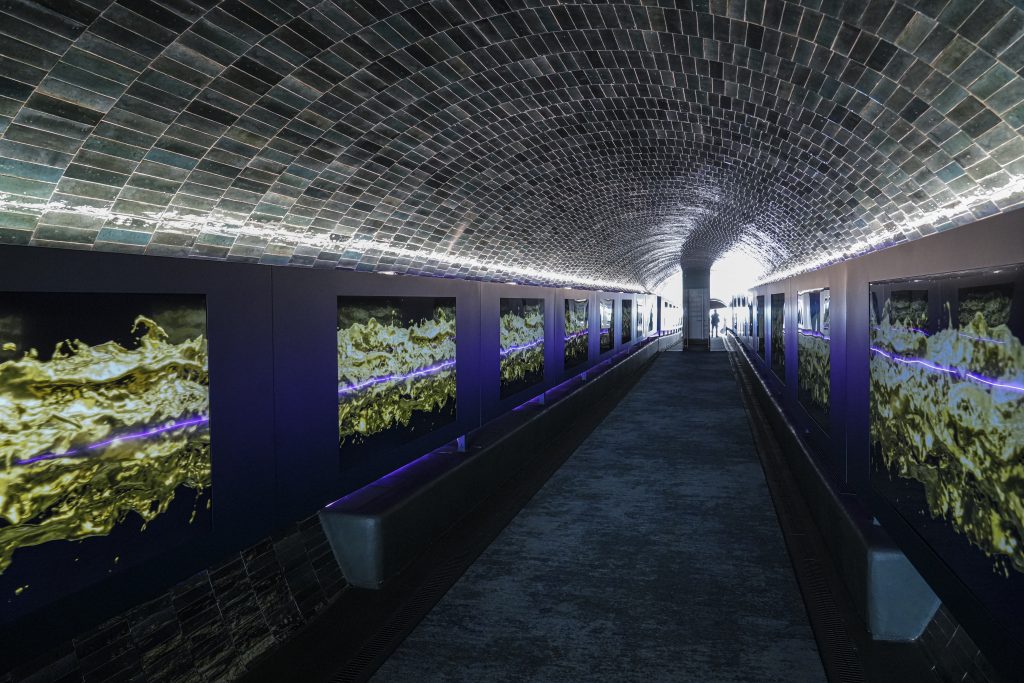
A much-talked-about Archea project is the Viola Park development, years in the making, which will be the training center for ACF Fiorentina. It is poised to become the largest sports hub in all of Europe, on the edge of town in Bagno a Ripoli. There will be ten heated soccer fields with lighting, two small stadiums of 3,000 and 1,500 seats each, guesthouses, fitness areas, food services and hosting services for visiting men’s and women’s teams as well as youth squads. To see the project mid-construction, as it is at the moment, is to understand Archea’s aesthetic values clear as day. Set in a basin of Florentine hills, the design immediately reflects the surroundings. Glass reflects the beauty of the countryside with olive green and warm brown accents. Absolutely nothing looks out of place. More remarkable still is that the constructions look to have grown from the rich Florentine soil, so natural are the installations. Sure, there is 90 per cent perspiration behind the whole affair, but that one per cent inspiration, that one per cent genius that so often goes missing in modern art, is very much there. This will be something that Florentines will speak about with pride to all of Europe and the world.
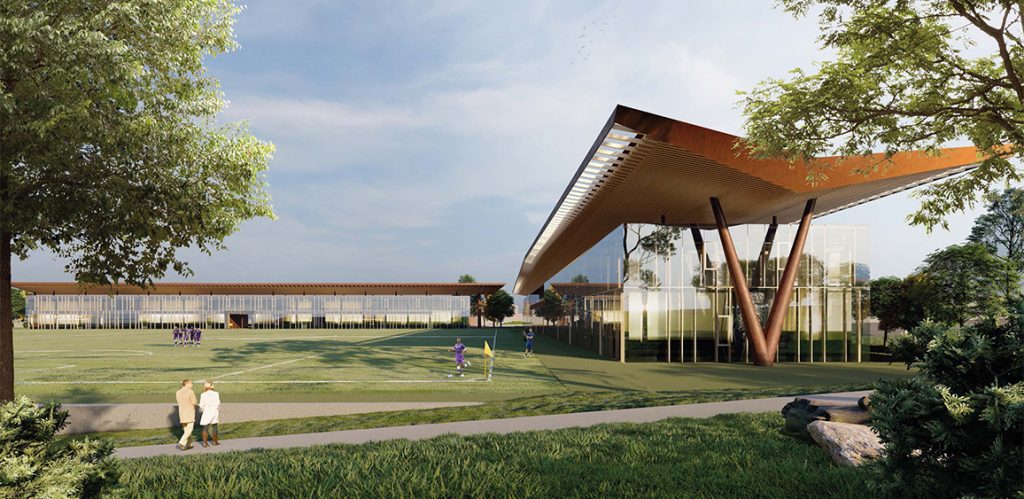
Back at Archea’s headquarters, one finds an intricate maze of powerful creative silence. The artists are working, inventing, refining and studying, whether it is computer-generating projections for a grand new edifice, preparing materials for the publishing department, digital processes or just pure invention. In an open bright picture window room to the hilly gardens behind the lungarno, Marco Casamonti, lead architect, appears. Boyishly energetic, he possesses that eternal timelessness of the genius. He won’t suffer fools gladly, but it is evident that his mind is constantly on the creative super-highway, moving so fast that there might not be enough time for his studio associates to make sure everything can get done. But all are wise enough to know that architecture is a practical affair: it must stay standing; it must function; it must embrace the people whom it serves; and it must sit comfortably in its surroundings.
While there is so much more than meets the eye, one immediately notes fellow architect Giovanni Polazzi, a wise and sensitive artist, the practical and calm to Casamonti’s brilliant enthusiasm. There is lead architect Laura Andreini, a force who listens carefully and thoughtfully to the goings-on, but has to excuse herself to meet with international clients. There is Massimo Sabatini, Archea’s general manager, an elegant spirit with an impish grin and a twinkle in his eye. He understands the elements of Archea’s personalities and the personality of the whole, and represents it with such genuine admiration that one wants to be a part of the Archea family even if one has no pretensions to the art of architecture. Young architects and staff members come in and out, and present with reverence, standing tall, as they are treated like the ticking heart and value of the entire endeavor. Around the headquarters alone, there is a recently completed boutique hotel embodying the aesthetics of Archea, hosting travelers and the firm’s clients. One appreciates just how vast the campus is just behind that simple door on lungarno Benvenuto Cellini.
Marco Casamonti, with his Italian movie-star demeanor, then launches into the description of a new project that moves him personally.
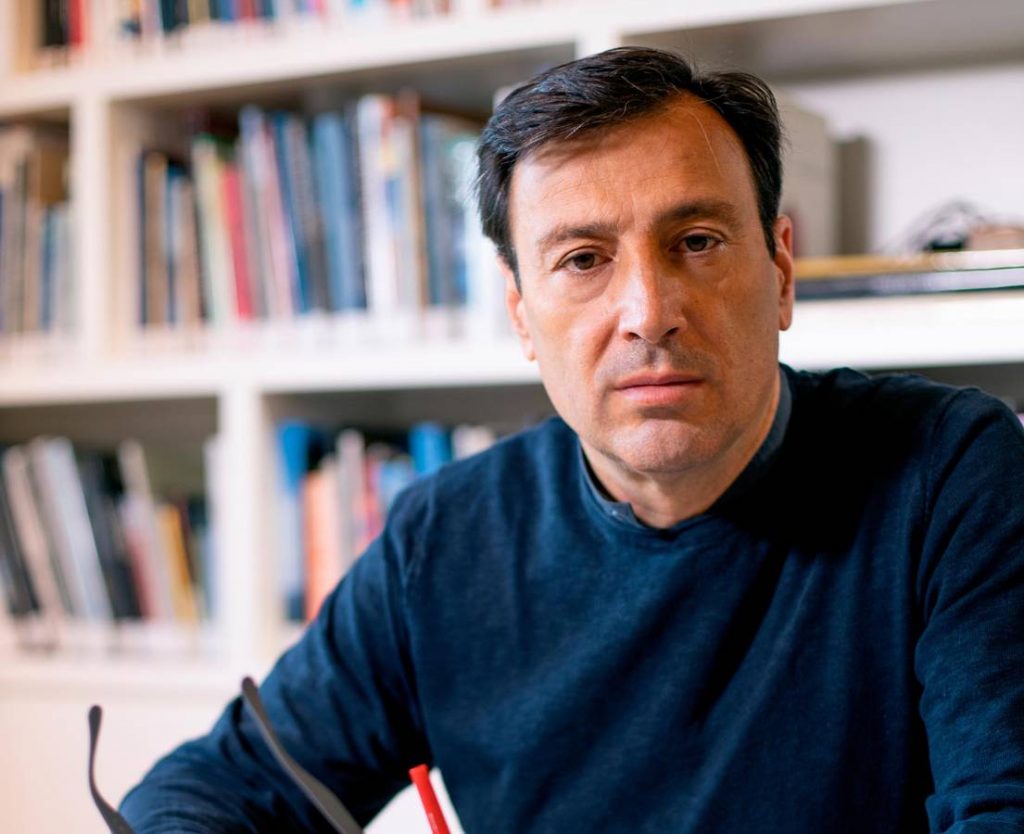
I saw what was about to be done to our beloved Teatro Nazionale in piazza della Signoria, originally an 18th-century jewel box theatre, later a movie house, followed by years of abandonment, there sitting in our majestic city centre. There was a developer who threatened to turn it into a spa. A swimming pool on the stage. I had to save it. I don’t know why. A crazy idea. It’s a place where Florentine stories have been told. It needs to be a place for Florentine stories to be told again. It needs to be a Florentine centre of art, creativity, performance and an intimate experience with the beauties of our city. I had to save it.
An associate puts a digital Vectorworks section of the plans for Teatro Nazionale up on the large television screen and one can virtually walk into the plans for the theatre. It is another thrilling Archea-Casamonti moment, where the past meets the present and the future in a moment of controlled energetic combustion. There is discussion of “what is”, “what can” and “will be”, and Marco says, “My heart is in this.” One gets that he means it in the deepest sense. More to the point, all those around him are equally invested. It means something to each of them.
Then there is an opportunity to ask Marco a few questions.
What accomplishment are you most proud of?
“For an architect, the most important results are the designed spaces that are experienced by those who live there and make use of them. When you work on an urban scale and succeed in modifying a part of the city, making it an integral part of people’s lives, the satisfaction becomes enormous because, ultimately, the architect works not for himself but for others. On a practical level, the reconstruction of the stadium in Tirana was an extraordinary success in socio-economic terms. The sense of belonging and pride that this building has been able to activate in the Albanian capital, also through enhancing the work of a great Florentine architect like Gherardo Bosio is a positive example for our country too. In terms of the landscape, the Antinori winery still surprises more than ten years after its creation for the ability of visitors to understand its environmental value, as well as admiration for a family that has dedicated generations of attention to the land and its products.”
As a product of Florence yourself, its history, tradition and environment, what do you feel about the balance between the art of conservation and the need for development and modernization?
“Florence has always been a city of extraordinary modernity, especially during the Renaissance. It was from Florence that the culture of humanism spread throughout Europe, contributing to the cultural revolution and modernization that still today earns us admiration and interest on a global level. The balance between conservation and development can only be achieved if we manage to rediscover that spirit and energy towards change that swept through Florence over the course of 200 extraordinary years ranging from the end of the 1300s to the mid-1500s.”
What is the artistic ethic of Marco Casamonti the individual and your ethic of self-expression on the world stage of architectural design that has to appeal in some way to many. How do you find that balance or does it not concern you?
“In architecture, the terms ethics and aesthetics are often confused. The meaning of each is extremely precise, so I believe in an ethical dimension in aesthetic research and believe equally in beauty that is inextricably connected to behavior and methodologies that place ethical values at the center of one’s actions. Art and ethics should not be confused, but constantly placed in relation to each other. For this reason, the profession of the architect, and therefore the essence of the discipline that governs its intellectual action, can only place the individual at the centre, since architecture is inevitably the art of living.”

